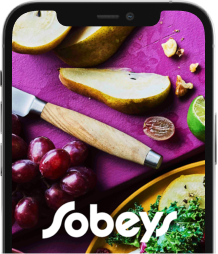A well-stocked freezer can make a world of difference when it comes to getting quick and easy meals on the table. Knowing the basic food-freezing guidelines will help you make the most of your freezer space to get dinner ready in a flash.
Choose Your Container
Freeze items in airtight containers or re-sealable bags. If you’re using a bag, try to get as much air out of it as possible to prevent freezer burn and preserve freshness. To protect food from the smell of other items in your freezer, wrap it in plastic wrap or foil before placing in re-sealable bags.
Think Small
When cooking large batches of soup, lasagna or stew, try freezing them in portion sizes you know you’ll use—a single or double serving can be thawed more quickly than a larger one.
Cool Foods Quickly
Large batches take longer to cool down. The solution: Divide the food among small, shallow containers to increase the surface area and speed up the rate of heat loss. To prevent bacterial growth, seal and pop the containers into the freezer as soon as steam stops rising from the top.
Use Labels
Make foods easy to identify by clearly labelling containers with the name of the item and the date it was made. You might forget what you’ve stored in there when you’re hunting through your freezer months later, so labelling will save you the guesswork.
Shop Your Freezer
Placing a reminder in your calendar is a handy way to remember to check your freezer contents every month or so. This will help minimize waste, keep you organized and make it easier to plan meals.
Freeze the Summer
Wash and freeze seasonal produce to use throughout the cooler months.
- Blueberries: Wash and dry thoroughly with paper towel before placing on a rimmed baking sheet. Freeze and then transfer to a re-sealable bag.
- Cherries: Use the same process as above, but pit the fruit after it’s been washed and dried.
- Corn: Remove husks and silks. Blanch in boiling water for four minutes, drain well and cool completely. Remove kernels from cob; freeze on a cookie sheet and then transfer to re-sealable bags.
- Fresh peas: Remove from the pods, wash and then blanch in boiling water for three minutes. Cool completely in an ice bath and drain thoroughly. Freeze on a cookie sheet and then transfer to a re-sealable bag.
Keep in mind that frozen fruits and vegetables won’t necessarily have the same texture as fresh, but they are a marvellous substitute when out of season.
Thaw Safely
To prevent bacterial growth, defrost foods in the microwave or thaw in the fridge instead of on your kitchen counter. Remember: Food that has been thawed can’t be frozen a second time.
Some foods, such as raw tomatoes, lettuce, mushrooms and eggs, don’t keep their texture when frozen, so it’s best to enjoy these fresh.
Check Your Temperature
Set a reminder in your calendar to check the temperature of your freezer every few months. Keeping it at -18˚C (0˚F) or lower will prevent bacterial growth.
How Long Does Frozen Food Last?
Meats such as beef, lamb and pork will keep in the freezer for about 10 months, while ground meats should only be kept for a maximum of three months. A whole chicken or turkey is safe for up to a year; chicken and turkey pieces should be consumed within six months. Bacon and raw sausage can be kept in the freezer for a maximum of about one month.
Any frozen dishes containing cooked meat, as well as stews, gravies and meat broths should be eaten within three months, while cooked poultry and fish can be kept in the freezer for up to six months. Vegetable-based dishes, such as tomato sauce and pesto, can be kept safe in the freezer for up to three months. Frozen soups and casseroles should be eaten within four months. Summer preserves, like freezer jam, can be enjoyed safely when frozen for up to a year.





